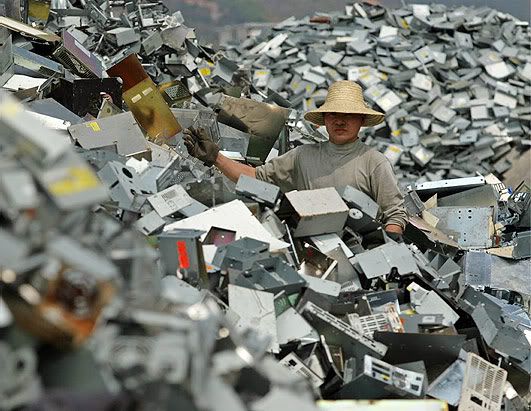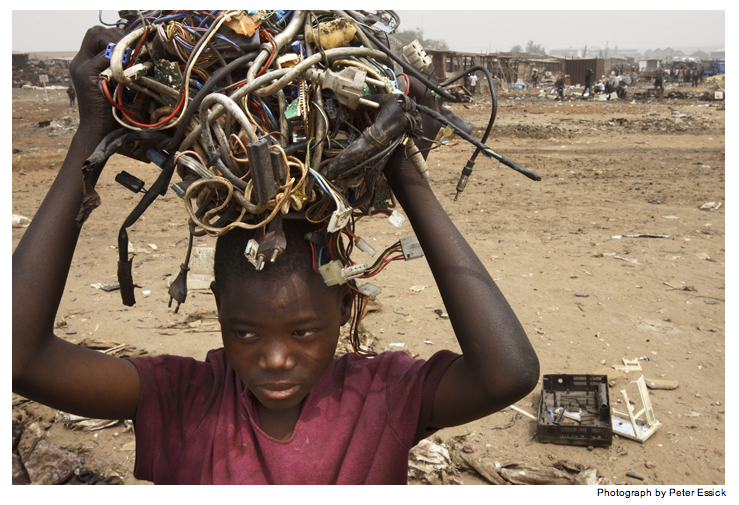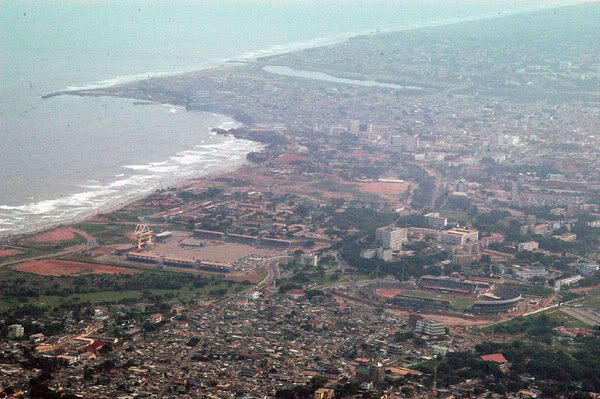 Technology is changing our world. Within the last century, our planet has become a lot smaller. Technological advancements in the area of communication have allowed an unbelievable increase in the mode and frequency of communication. The development of the printing press, telegraph, telephone, phonograph, radio, television, cellular telephone, satellite, computer, and the Internet have removed obstacles of distance and time, allowing people who are literally worlds apart to transmit verbal, visual, and auditory messages as if they were sitting right next to each other. We have undeniably been ushered into the information age, where massive volumes of information are but a heartbeat away.
Technology is changing our world. Within the last century, our planet has become a lot smaller. Technological advancements in the area of communication have allowed an unbelievable increase in the mode and frequency of communication. The development of the printing press, telegraph, telephone, phonograph, radio, television, cellular telephone, satellite, computer, and the Internet have removed obstacles of distance and time, allowing people who are literally worlds apart to transmit verbal, visual, and auditory messages as if they were sitting right next to each other. We have undeniably been ushered into the information age, where massive volumes of information are but a heartbeat away.Even though our global community seems to have become more interconnected recently, the size of our community has continued to increase. The global population is estimated to be roughly 6.79 billion people, with many of the additional inhabitants resulting from the exponential population explosion occurring in most less developed countries. Technology can again be help responsible for this dramatic population increase. Technological advancements have contributed to better medical care and an increasing quality of life. Although overpopulation is a genuine concern, technological advancements can potentially allow for more efficient farming and cultivation on land that was once unproductive. Technology is helping change the face of our planet.
 It seems that technology has altered the course of human history. The impact that technology has on our world is not always favorable. The benefits to society that technology creates can sometimes be overshadowed by the juxtaposition of the extreme waste that is produced from the cycle of consumerism that accompanies the latest technological advancements of consumer electronics. The culture of consumerism in the United States produces massive volumes of technological trash, or e-waste. This trash is exported to less developed countries to be recycled, where workers often are subject to noxious conditions that affect their health and safety. Consumerism is responsible for some of the problems facing citizens of less developed countries that are used as landfills. Citizens of more developed countries should be more accountable for their contributions to this global issue.
It seems that technology has altered the course of human history. The impact that technology has on our world is not always favorable. The benefits to society that technology creates can sometimes be overshadowed by the juxtaposition of the extreme waste that is produced from the cycle of consumerism that accompanies the latest technological advancements of consumer electronics. The culture of consumerism in the United States produces massive volumes of technological trash, or e-waste. This trash is exported to less developed countries to be recycled, where workers often are subject to noxious conditions that affect their health and safety. Consumerism is responsible for some of the problems facing citizens of less developed countries that are used as landfills. Citizens of more developed countries should be more accountable for their contributions to this global issue. The image to the right provides a brief glimpse into this global issue. We are afforded a look at the role of this prepubescent boy in the electronic recycling process, through the eyes of the photographer, Peter Essick. Because of the composition of the photo, attention is first drawn to the mass of wires and cords the boy carries on top of his head. The tangle multicolored of cords and wires is analogous to the diverse, densely populated world, where (as a result of technology) we are interconnected across the globe in ways previously unimaginable.
The image to the right provides a brief glimpse into this global issue. We are afforded a look at the role of this prepubescent boy in the electronic recycling process, through the eyes of the photographer, Peter Essick. Because of the composition of the photo, attention is first drawn to the mass of wires and cords the boy carries on top of his head. The tangle multicolored of cords and wires is analogous to the diverse, densely populated world, where (as a result of technology) we are interconnected across the globe in ways previously unimaginable.Attention is next directed at the boy's face. The vector of attention is directed to the left, out of frame, even though the boy's head and body still face forward. The cultural differences in eye contact should be accounted for. In many East African cultures, avoiding eye contact is a sign of respect. Is the boy showing respect to the western photographer because of his age or because the photographer wields technology that is far superior to what the boy has in his possession? He might simply be keeping his focus on the long trip ahead and annoyed at the arrogance of this westerner who impeding his progress, after all time is money, even in the recycling business.
The boy wears a red shirt. It is dirty and oversized, probably provides some variety of protection from the hot Ghanaian sun. Red can symbolize courage and sacrifice, as this boy, if anything, is a hard worker with the courage to scavenge for survival. Even though he is young he is working to put food on his family's table or clothing on their backs. Is he sacrificing a chance to get an education so he can give back to his community? He is also demonstrating courage and sacrifice of his personal well being. When workers come in contact with the electronic equipment, they are being exposed to many carcinogenic heavy metals. Is he sacrificing his health in vain? The boy has the courage to continue on, but then again he may have no choice. Will those who view this image that have contributed to the electronic waste that would harm so many have the courage to make a stand, reducing consumption of electronic goods? Will those who have help those who have not and are working in inhumane conditions to survive?
 The picture of a person in this setting carrying a load on their head creates a visual analogy of the water bearer. In many less developed countries, there is little access to clean water. Women from both urban and rural areas in these countries sometimes have to walk miles to bring clean, drinkable water from the nearest eligible water source back to their community. This is an important job, as clean water is necessary for survival. Does the job the boy is doing have the same importance in his community? Because of the load he carries, he ensures survival for his community, similarly to the water bearer. Although he is young, he has an important role in his community. This contrasts with the role of most preteens and teenagers in more developed countries like America. How long will we take for granted the struggle that our peers in the global community have to endure? How long will we take for granted things that are unequally distributed to the more developed countries (like technology, clean water, and access to education) that those in less developed countries have to do without?
The picture of a person in this setting carrying a load on their head creates a visual analogy of the water bearer. In many less developed countries, there is little access to clean water. Women from both urban and rural areas in these countries sometimes have to walk miles to bring clean, drinkable water from the nearest eligible water source back to their community. This is an important job, as clean water is necessary for survival. Does the job the boy is doing have the same importance in his community? Because of the load he carries, he ensures survival for his community, similarly to the water bearer. Although he is young, he has an important role in his community. This contrasts with the role of most preteens and teenagers in more developed countries like America. How long will we take for granted the struggle that our peers in the global community have to endure? How long will we take for granted things that are unequally distributed to the more developed countries (like technology, clean water, and access to education) that those in less developed countries have to do without?After observing the boy and his burden, the contrast of the barren, earth-filled background can be further analyzed. There is a stark contrast between the technological debris and litter strewn on the ground when compared with the earth. Technology doesn't belong out in the elements. Electronics are clean, antiseptic, and synthetic. The earth is dusty and dirty, and natural. How can these two entities exist in the same environment? This line of questioning allows us to draw many parallels (global, environmental, philosophical, etc.) in the composition of this image. Can human kind continue to exist on earth, especially with the risk of impending overpopulation? Can nature survive under the burden of technology, or in this situation technological waste? Will human kind survive under the encumbrance of the technological Frankenstein's monster that we have created? Will the boy make it to his destination to successfully deliver his load? We know that technology is constantly changing, but what will the next change consist of?
 The landscape of many less developed countries is being changed by technology, but not always in the way we've previously examined. The changes technology brings to places like Accra, Ghana might be described as shocking and moving. Photojournalist Peter Essick is skilled at capturing the consequences of human behavior in a graphic medium. He has documented such compelling topics as global warming, nuclear waste, and war, and can now add the toxic process of electronic recycling to his résumé. Some would say that the export of used electronics for recycling provides jobs to many workers that would have none otherwise. In the United States, we have yet to establish a lucrative electronics recycling operation, which is why we ship the worthless goods to someone else who will be bothered with them. We might be able to shift the evidence of our own consumption to another party, but we cannot deny the global interconnectivity, which means we will eventually have to come to terms with our actions.
The landscape of many less developed countries is being changed by technology, but not always in the way we've previously examined. The changes technology brings to places like Accra, Ghana might be described as shocking and moving. Photojournalist Peter Essick is skilled at capturing the consequences of human behavior in a graphic medium. He has documented such compelling topics as global warming, nuclear waste, and war, and can now add the toxic process of electronic recycling to his résumé. Some would say that the export of used electronics for recycling provides jobs to many workers that would have none otherwise. In the United States, we have yet to establish a lucrative electronics recycling operation, which is why we ship the worthless goods to someone else who will be bothered with them. We might be able to shift the evidence of our own consumption to another party, but we cannot deny the global interconnectivity, which means we will eventually have to come to terms with our actions.Works Cited
Carroll, Chris, and Essick Peter. "High-Tech Trash." National Geographic Jan. 2008. 8 Oct. 2009 "Population Trends: Rapid Growth in Less Developed Regions." United Nations Population Fund. 10 Oct. 2009
No comments:
Post a Comment